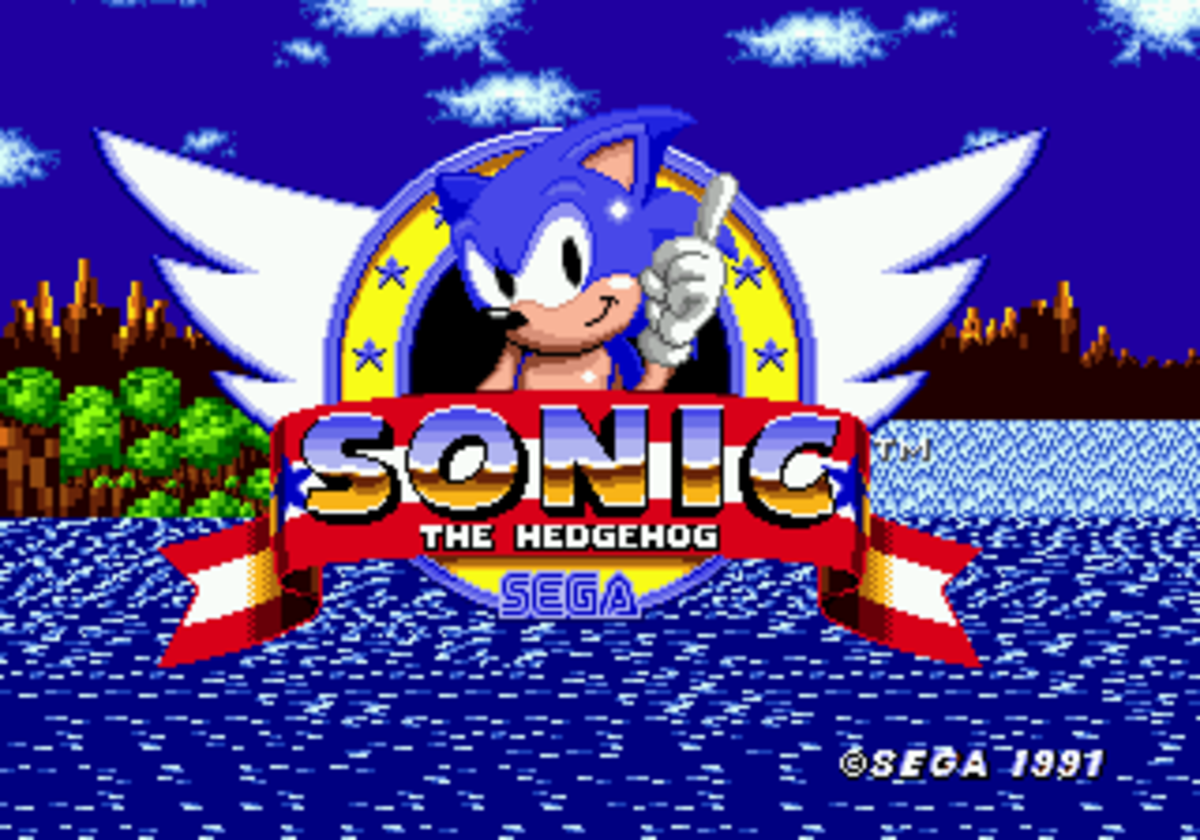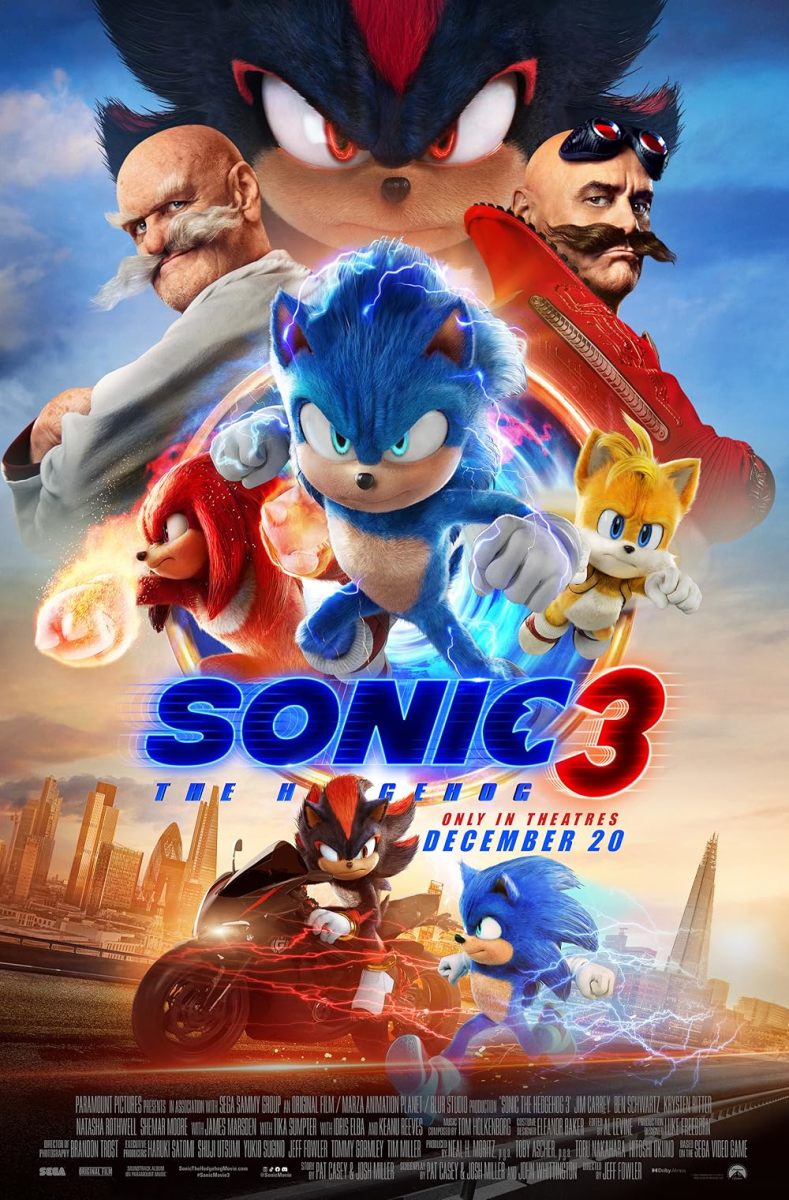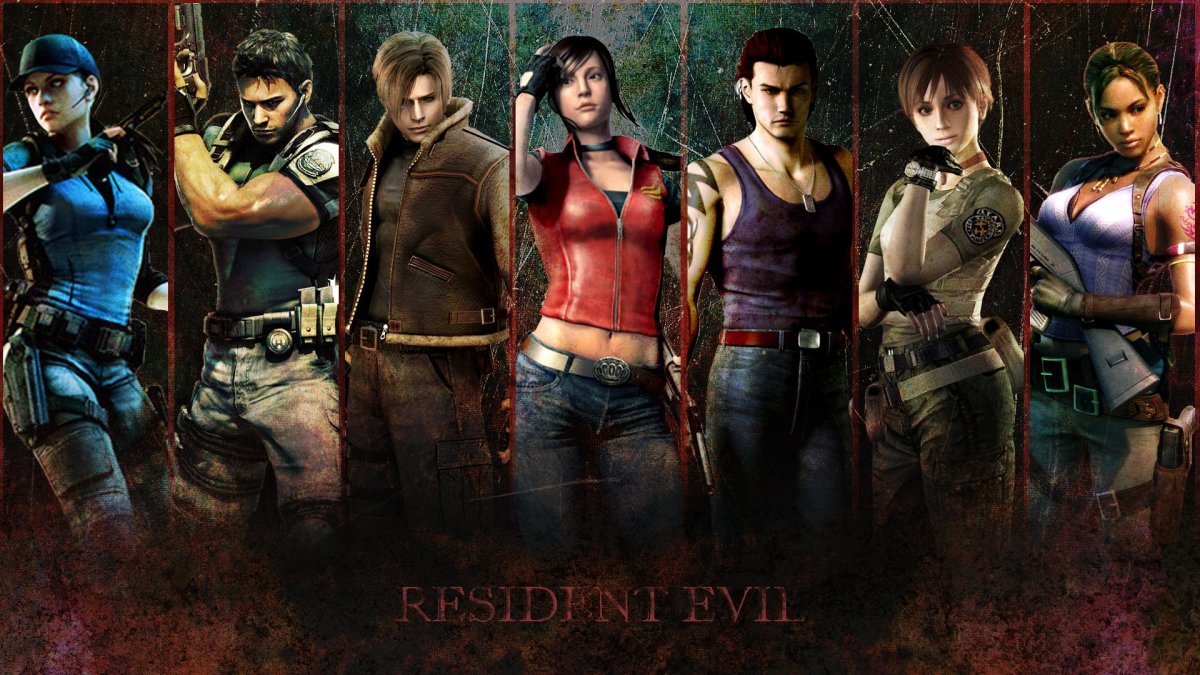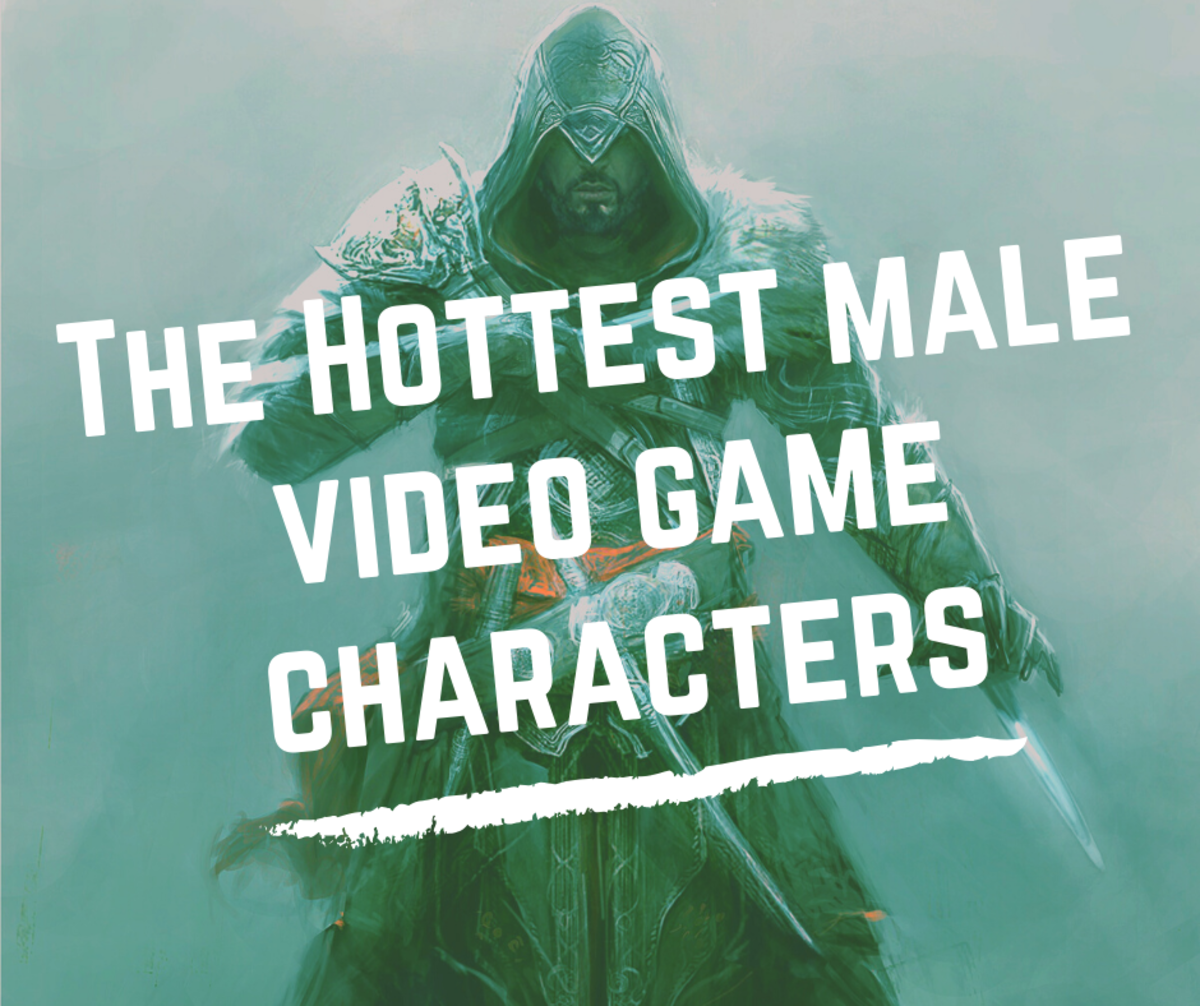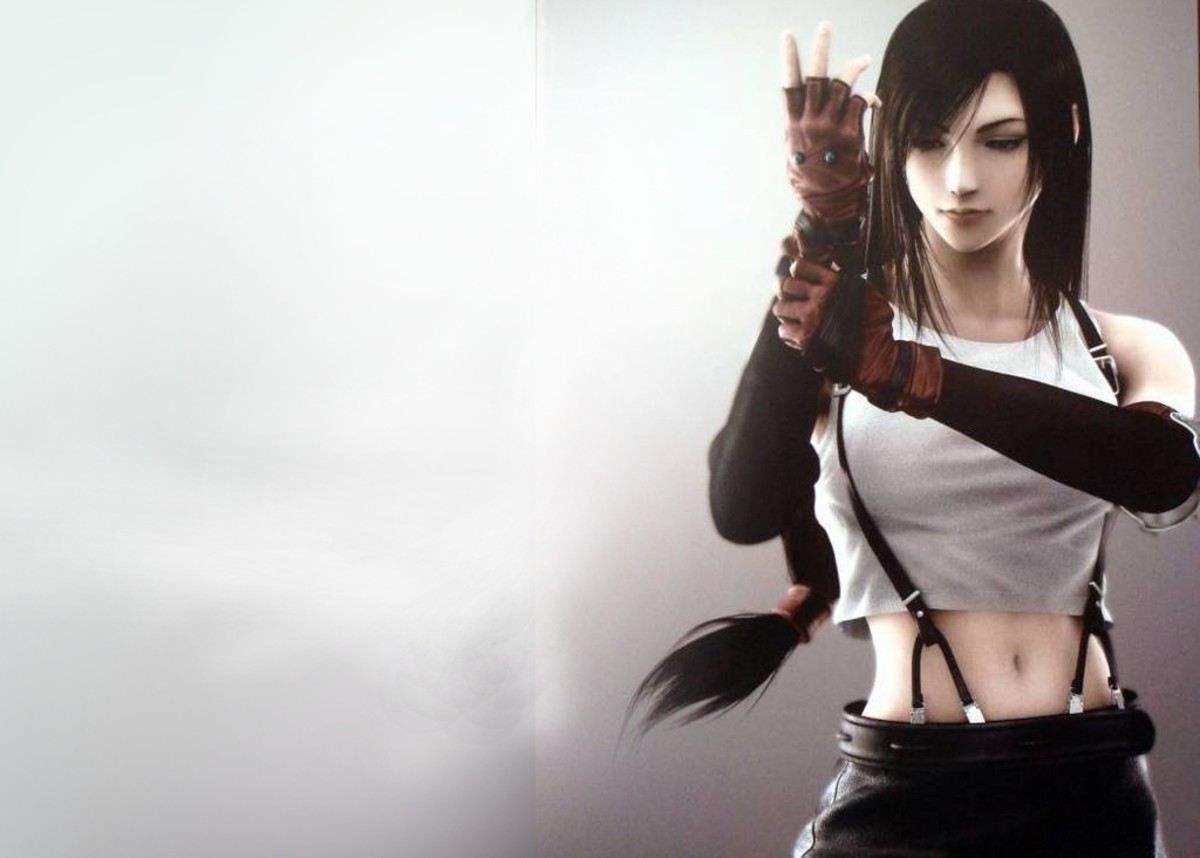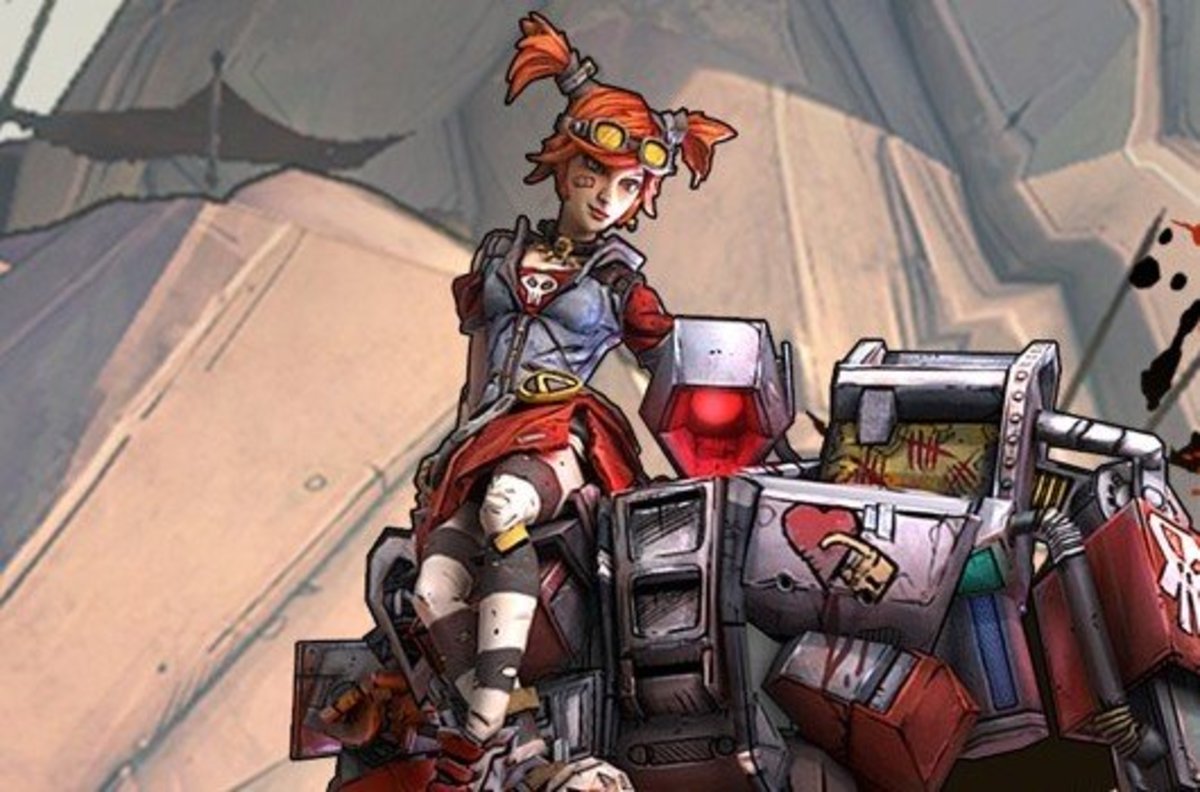Video Game Characters on Life Support: Sonic the Hedgehog
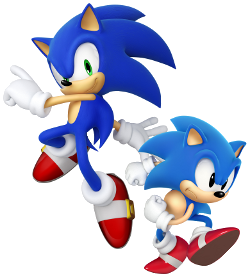
Note: This article, the second of a series (see part 1, and the reasoning behind the series, here), is written with hopes that the characters featured here can enjoy a similar rebirth in the near future, but in the meantime I will look back at the character's prime, and why they aren't doing so well now, plus ideas on how to get the character back on track.
Origins
Released in North America in 1989, the Sega Genesis (known in non-American regions as the Mega Drive) boasted 16-bit sound and graphics which the NES could not match. It also featured much more faithful ports of arcade classics. Still, Sega found itself behind Nintendo as the latter found much success with the release of Super Mario Bros. 3. Further making life difficult for Sega was that Nintendo was preparing a successor to the NES: the Super Nintendo Entertainment System, which would eventually see release in 1991 alongside the also-successful Super Mario World. Sega's "mascot" character at the time, Alex Kidd, just was not nearly as popular as Mario. Higher-ups at Sega knew they needed to find some way to go toe-to-toe with Nintendo and Mario, and developed a game - and a mascot - to do just that.
Sonic the Hedgehog would ultimately be that game, and that mascot. Advertised as a faster alternative to Mario, Sonic was marketed heavily and became the in-package game for Genesis systems. The character helped boost Genesis sales significantly, completely overshadowing the Super Nintendo's initial release, and Sonic officially became the "big thing" of video games, at least at the time.
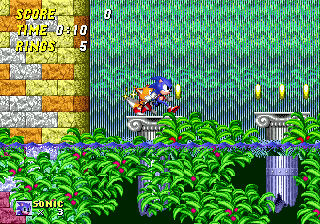
Glory Days
Knowing what they had at their disposal, Sega wasted no time in making more Sonic games. This started with 1992's Sonic the Hedgehog 2, which introduced Sonic's fox partner Miles "Tails" Prower and remains one of the most popular and beloved Sonic games in the series. One year later, Sonic the Hedgehog CD was released for the Sega CD (known as the Mega CD in non-American regions), an attachment to the Genesis. It introduced Amy Rose, a young female hedgehog madly in love with Sonic.
One year after that, Sonic the Hedgehog 3 was released for the Genesis, but was broken up into two releases: Sonic 3 early in the year, and Sonic & Knuckles later on; the latter featured "lock-on" technology which allowed previous Sonic games to attach to Sonic & Knuckles. Sonic 3 attached would unlock the "full" version of the two games, while Sonic 2 attached unlocked a version of that game but with Knuckles the Echidna as the playable character. Most other Genesis games attached would unlock a single version of a Sonic 3 special stage (known as Blue Sphere), while Sonic 1 would unlock millions of Blue Sphere stages to play.
All of those releases were met with acclaim, fame, and success. There were multiple Sonic games released for the portable Game Gear as well, and a Knuckles spin-off for the Sega 32X attachment (known as Knuckles Chaotix), but these weren't as well-received.
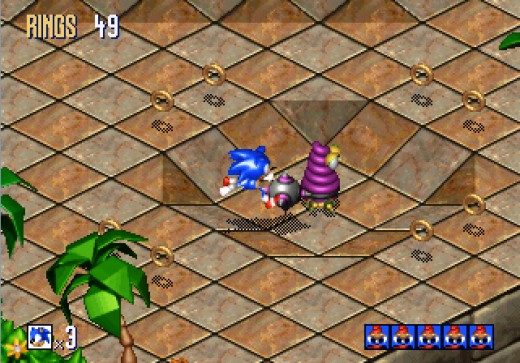
The Lull
In late 1994, the Super Nintendo would land an effective counter-punch in the form of Donkey Kong Country, whose visuals were very impressive at the time. With that game receiving two immediate sequels, the Super Nintendo started to rebound. At the same time, the 16-bit era had started to reach an end as companies began to shift focus to more powerful systems.
Sega knew this, and despite the relative failures of the Sega CD and Sega 32X, tried to get a jumpstart on this new market with the CD-based, 32-bit Sega Saturn, released in markets months before Sony's PlayStation. However, with no killer game (and in some markets, very few games), Sega ended up getting destroyed by Sony and the PlayStation became *the* system of the late 90s.
What happened to Sonic during this time? After the critical success of Sonic 3 in 1994, where did Sega's popular mascot go? For the five years that followed, Sonic was barely seen outside of Game Gear releases that had no impact on the market. He did appear in the 1996 game Sonic 3D Blast, a game developed by an outside company for both the Genesis and the Saturn. It featured a unique isometric perspective, but the game was not well received due to this, as well as poor controls and gameplay mechanics.
Sega had also been developing a Sonic game for the Saturn, with the tentative title "Sonic Xtreme", meant to bring the Hedgehog to a full 3D environment. However, the game's development with met with delays and difficulties, and the project was eventually scrapped. Some videos of the game leaked to the internet features an odd "fisheye" perspective.
Sega was able to muster out "Sonic Jam" for the Saturn, which was just the four major Genesis Sonic games based in a 3D hub world, but the Saturn was otherwise doomed to fail, especially in North America.
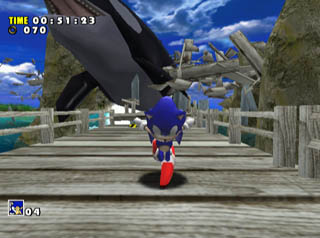
The Short Rebirth
Sega instead refocused their efforts on a much more powerful system, and a Sonic game to accompany that. That ended up being the Sega Dreamcast and Sonic Adventure, both released in 1999 in North America. Along with the two came a redesign for Sonic and pals: everyone became taller, their eyes given more color, and everyone was given a specific personality that Adventure displayed in its cutscenes. Adventure also featured multiple gameplay types: while Sonic or Tails still had speed-bases stages, Knuckles' stages had him searching for emerald shards, and Amy trying to avoid capture by a seemingly indestructible robot. Two new playable characters were introduced: Big the Cat, whose stages find him fishing for his pet frog, and E-102 Gamma, one of Dr. Eggman's robots whose stages find it shooting things. The game, at the time, had a positive reception though parts such as Big's stages were met with more disdain.
Two years later, a sequel, Sonic Adventure 2, was released for the Dreamcast. It introduced two more characters: Shadow the Hedgehog, an edgier version of Sonic with a weird past, and Rouge the Bat, some kind of jewel thief. Like the first Adventure, there were multiple gameplay types in this game: Sonic and Shadow had speed stages, Tails and Eggman had stages similar to E-102 Gamma's in the first Adventure, while Rouge joined Knuckles in shard-hunting. This game had similar reception, but by the time it came out the Dreamcast was nearing its end.
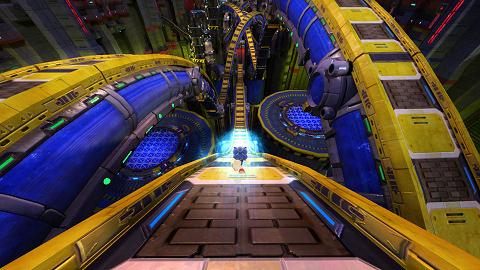
The Struggle
While the Dreamcast had some success, Sony's PlayStation had too much of the market at the time, and its successor the PlayStation 2 destroyed sales in the early 2000s. Sega effectively flew a white flag, and the Dreamcast came to an end, Sega opting to develop as a third party from then on.
Sonic Adventure 2 was ported to the Nintendo GameCube with additional multiplayer options. That alone brought about a new wave of Sonic fans. The next big Sonic release was the 2003 game Sonic Heroes, which came out for all of the major consoles at the time. The game, which features four teams of three characters working together to clear massive stages, was met with lukewarm praise. Shadow the Hedgehog, a game released in 2005, featured Shadow as the main playable character, an edgier theme and gameplay and was met with somewhat less praise than Heroes. Throughout this, multiple Sonic games continued to release on handheld devices, notably the Sonic Advance series for the Game Boy Advance, a set of 2D Sonics which were generally liked.
Then, in 2006, the series was hit with something akin to a reboot. Sonic the Hedgehog, no number or subtitle, was released for the PlayStation 3 and Xbox 360. Promised to bring Sonic and his speed to (at the time) next-generation consoles, the game was instead a rushed, buggy mess riddled with glitches, loading times, and an absolutely cringe-worthy story for any age. Met with near universal disdain, Sonic had officially hit its low point (so it seemed at the time).
Sonic Unleashed, released in 2008, was another reinvention of the series. Introducing the "Hedgehog engine", the game featured 3D stages for Sonic which gave a sense of speed not seen in any 3D Sonic before it. However, while this particular aspect, as well as some return of 2D gameplay, was praised, the game was also panned for quick time events, as well as half of the game taking place in "night stages" where Sonic had turned into a "Werehog" which were more combat-oriented and played more like a poor God of War clone.
Still, Sega was aware of the praise towards the speed sections of the game, which influenced the next two console releases: 2010's Sonic Colors (only for the Wii, with an alternate DS version as well), and 2011's Sonic Generations (for every major platform at the time except the Wii, with an alternate 3DS version). Both games used elements introduced in Unleashed for much of each game's stages, with Colors introducing the alien Wisps that give Sonic unique, temporary abilities, while Generations reintroduced the "Classic" Sonic as well as stages which resembled Sonic games of the past. Both games were well received, especially when compared to Sonic 2006 and Unleashed.
Also, during this era, Sega released Sonic the Hedgehog 4, two episodes worth of levels reminiscent of those found in the old Genesis titles. Episode I was released in 2010 and featured only Sonic as a direct sequel to Sonic & Knuckles; Episode II was released in 2012 and brought back Tails while acting as a follow-up to Sonic CD. Both games, Epsiode I in particular, featured very poor physics and level design and neither episode was particularly well-received, though Episode II fared better.
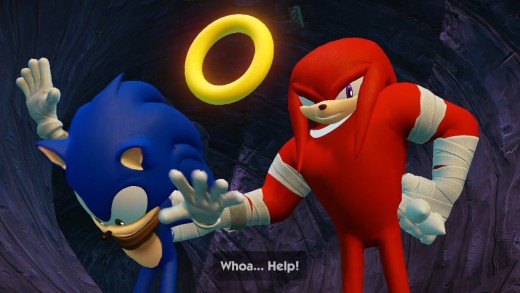
The Fall
Following Generations, hope for Sonic was somewhat renewed. Sadly, that would not last. In 2013, Sonic Lost World was released for the Nintendo Wii U and the Nintendo 3DS, featuring gameplay and level elements that many described were ripped right out of the two Super Mario Galaxy games. However, this game was not as well received, citing odd controls and a lack of speed like that found in the previous three main entries (lack of speed an unfair criticism, I might add).
Shortly after that, Sega announced a new project involving Sonic that would see a major redesign for the character. That project, Sonic Boom, was a multimedia affair, including a TV series (the main draw), a comic book series, and video game tie-ins for the Wii U and 3DS. While the TV series and comic book have been met with mild praise, the Sonic Boom game, Rise of Lyric, for the Wii U was met with immense disdain, rivaling that of the 2006 Sonic the Hedgehog release. Like that game, Rise of Lyric was full of game-breaking glitches, some requiring little effort to perform, uninteresting team mechanics, and a "cinematic" experience which was anything but. The 3DS version fared a little better, but not by much.
Despite not really counting as "main" Sonic release, the hype created by Sega over Sonic Boom made the critical failure of the video games hurt that much more. Early in 2015, Sega announced it would shift developmental focus onto mobile and PC. Whether Sonic Boom's failures were involved with that decision or not is unknown. While it has been stated that Sonic games would still be developed for consoles, the latest Sonic game to see release was Sonic Runners, released in February of 2015 for iOS and Android devices. An endless runner similar to that of Temple Run, the game is your typical mobile app: free to download, but your bonuses and items requires resources which you can pay real money to get more of.
What kind of Sonic game would you want Sega to make (assuming its actually good)?
How to Revive Sonic
I'll take Sega, or at least some of its employees, at its word that it will continue to develop Sonic games for consoles. I will also assume that Sega will not lease, sell, or otherwise forfeit the property to another company. I know there are quite a few people who would like Nintendo to develop a Sonic game, but let's not consider that right now.
With that in mind, coming up with a way to "save" Sonic is difficult. There have been a plethora of Sonic games, and subsequently a plethora of "bad" Sonic games, some of which tried (and failed) to implement new gameplay styles or storylines, while others were bad despite trying to recapture the style of success of the original set of games. Further, most Sonic fans divide into two camps: those who grew up and love the original Sonic games and want more releases the play just like them (including getting the physics right), while another camp grew up and loved the Adventure games, notably the GameCube release of Adventure 2, and want more games that play in that style (despite the last such release, Sonic 2006, being so awful). A smaller camp would be fine with games that continued the trend found in Unleashed, Colors and Generations, but more refined. An even smaller camp is around that just has a simple demand: make a good game.
So, how does Sega do this? Here are some ideas:
1) Don't loan the property to third-party developers.
Not that Sonic Team makes good Sonic games with 100% efficiency or anything, but outside parties are much worse at doing so. Sonic 3D Blast was developed by Traveller's Tales and wasn't well-liked. Development of most of the Game Gear / Master System Sonic games was left to a company named Aspect, and those games were mediocre at best. Both of the Sonic Boom games were outsourced, and they ended up terribly.
I think, for the time being, Sonic should be developed only by Sonic Team. Granted, that alone doesn't solve anything, but Sonic Team has done a much better job making Sonic games than any other development team.
2) Take your time
Many of the "bad" Sonic games were ones that, more often than not, were rushed to meet a release date, often times the holiday season. Sonic 2006 was infamously cited for doing this, leaving it as the buggy mess as it was. I'm assuming Sonic Boom suffered a similar fate given its release date.
Given the speed-based gameplay of Sonic, I'm sure there's a lot of debugging the games need to go through, as well as a lot of playtesting. Alone, these two can't be rushed without sacrificing the final product. Sega has to realize at some point that its reputation does matter, perhaps not as much as its profits but it is a factor, and if it knows that any game, let alone a Sonic game, is too buggy to fix by a release date, then that game must be delayed.
3) Keep it simple!
Other than the gameplay, Sonic Colors and Sonic Generations have also been praised for keeping the gameplay to just Sonic. Not even Tails is playable in these two games, and the other characters are limited only to cutscenes. Unlike the early 2000 games in the series as well as games like Sonic Boom, these two games are also void of mid-level dialogue that detracts from the experience (save for Generations' final boss, which was a complete mess).
Now, there are many Sonic fans who do like many of the other characters like Tails, Knuckles, Shadow and so on. They would appreciate a game that included these extra characters as playable. I think the key here for Sega and Sonic team, then, is not to develop a game around a story featuring these characters, but to simply develop a game with the characters instead. I think games like Sonic 2006 suffered because there was too much emphasis on the narrative, and the game had to work around the narrative instead of the other way around.
Keep it simple: develop the game first; worry about the story later.
4) No matter how you go about your next Sonic game, treat it with care!
This is an extension of idea #2, but it's a major point. Going back to those factions, the ones who want a Sonic game this way or that way. Say Sega decides to appease each of these group of people. That's at least two Sonic games, one based on the Genesis games, one based on the Adventures games, and, why not, a third using a unique idea. Sega would tend to rush out at least two of those games as quickly as possible, which results in the buggy messes that several Sonic games suffer from.
Regardless of how Sega decides to go about their next major Sonic game, whether it goes forward with new ideas or revisits old ones, it must do so with care! Don't rush it, don't give the game minimal funding, don't outsource it to a small team or an inexperienced one. Give the project to an experienced lead, promise to give the development team the time and funds they need to produce a high-quality game. Even if the game needs to be delayed, Sega - at this point - needs to give its biggest property the care it needs to ensure it avoid the disasters its had both in the past and even recently.
The Future
I think, to start, the success of Sonic Runners will have some factor on how Sega develops its next Sonic game. To note, there still isn't a Sonic game for the PlayStation 4 or the Xbox One, despite the Wii U already having two such releases.
The optimist in me wonders if Sega is currently developing a game for the PS4 and One, but doing so cautiously and ensuring that the game is developed with care. The pessimist in me expect Runners to be profitable for Sega, and subsequent Sonic games will be mobile only using similar pricing structures.
Given Sega's very haphazard way of developing Sonic games, I can't hope for much out of this company despite the many mistakes one would hope the company can learn from. Sonic will be getting more games despite the many duds he's had, but one can only claim "Sonic is dead" so many times before it finally becomes true.

